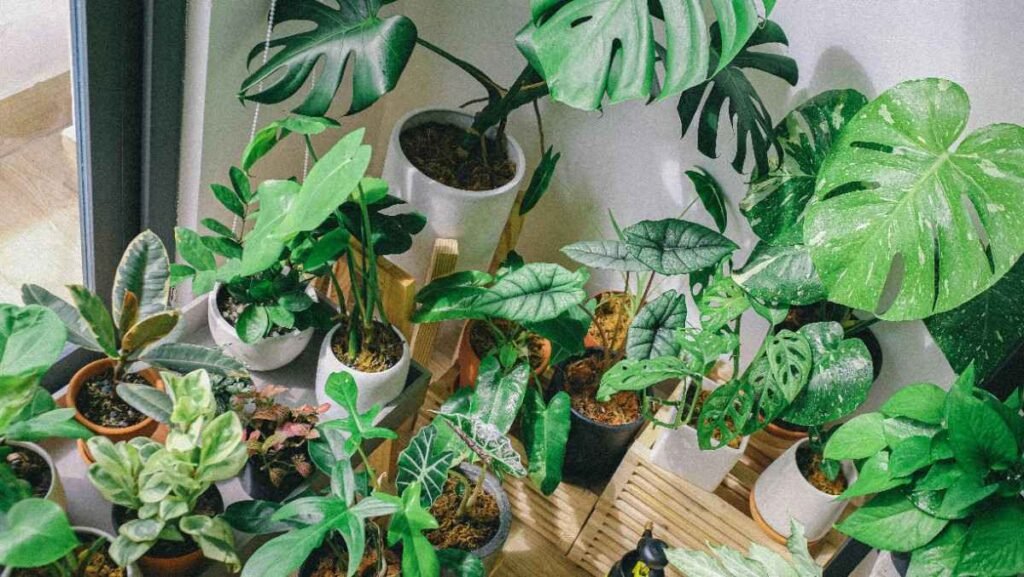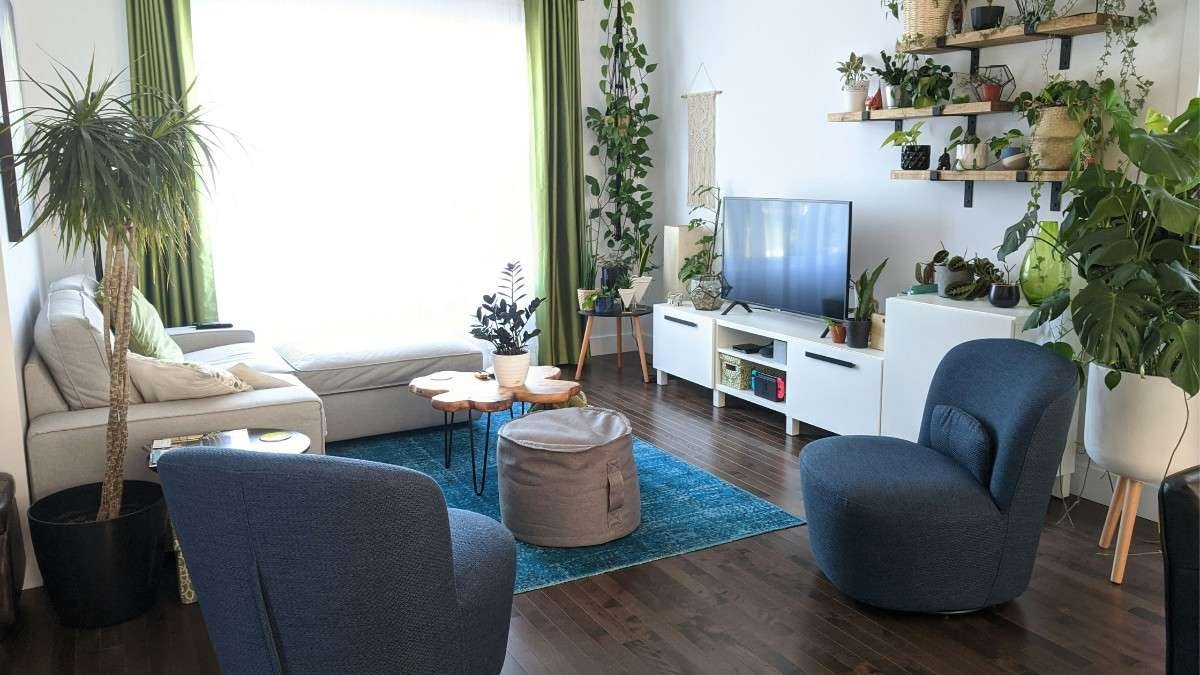In recent years, the significance of indoor air quality has gained widespread attention as people spend more time indoors, whether at home, in offices, or in other enclosed spaces. With modern buildings designed to be more energy-efficient and sealed, indoor air often becomes a reservoir for pollutants such as volatile organic compounds (VOCs), dust, and carbon dioxide.
Amid this challenge, indoor plants have emerged as not just aesthetic additions but also natural allies in enhancing air quality. From absorbing harmful toxins to increasing oxygen levels, these green companions offer a host of benefits that contribute to healthier living environments.
Here below we will discuss the multifaceted role of indoor plants in improving air quality, the science behind their cleansing properties, and practical tips for incorporating them into your spaces.
Understanding Indoor Air Pollution
Before exploring the benefits of indoor plants, it’s crucial to understand the sources and implications of indoor air pollution. Common indoor pollutants include:
- Volatile Organic Compounds (VOCs): Found in household products like paints, cleaning agents, and synthetic furniture materials, VOCs can cause headaches, nausea, and long-term respiratory issues.
- Carbon Dioxide (CO2): High levels of CO2, particularly in poorly ventilated areas, can lead to drowsiness and reduced cognitive function.
- Particulate Matter: Dust, pollen, and other airborne particles contribute to allergies and respiratory problems.
- Biological Contaminants: Mold spores, pet dander, and bacteria can worsen air quality and trigger health issues.
The Science Behind Plants as Air Purifiers
Indoor plants improve air quality through several natural processes:
1. Photosynthesis and Oxygen Production
Plants absorb carbon dioxide (CO2) and release oxygen during photosynthesis, enhancing the oxygen levels in enclosed spaces. This is particularly beneficial in poorly ventilated rooms where CO2 levels tend to rise.
2. Removal of Harmful Pollutants
NASA’s Clean Air Study, conducted in the late 1980s, demonstrated that certain indoor plants could remove harmful chemicals like benzene, formaldehyde, and trichloroethylene from the air. These compounds, often released by household items, can have detrimental effects on health.
3. Microbial Activity in the Soil
The root-soil system of plants hosts microbes that play a vital role in breaking down toxic substances. These microbes metabolize pollutants into harmless byproducts, effectively neutralizing harmful chemicals.
4. Humidity Regulation
Plants release moisture into the open air through a specific process called transpiration. This increases indoor humidity levels, reducing dryness and alleviating respiratory discomfort caused by dry air.

Top Indoor Plants for Air Quality Improvement
Not all kinds of plants are equally effective at purifying indoor air. Here are some of the most efficient air-cleansing plants:
1. Areca Palm (Dypsis lutescens)
Known for its ability to humidify the air, the Areca Palm is particularly effective in dry climates. It also removes toxins like benzene and formaldehyde.
2. Snake Plant (Sansevieria trifasciata)
Nicknamed the “mother-in-law’s tongue,” this hardy plant converts CO2 into oxygen at night, making it ideal for bedrooms.
3. Peace Lily (Spathiphyllum)
With its striking white color flowers, the Peace Lily is an excellent option for removing VOCs like benzene, formaldehyde, and trichloroethylene.
4. Spider Plant (Chlorophytum comosum)
Spider plants are low-maintenance and effective at combating carbon monoxide and other harmful gases.
5. Boston Fern (Nephrolepis exaltata)
This lush fern is a natural humidifier and helps remove pollutants such as formaldehyde and xylene.
Benefits Beyond Air Quality
While the primary focus of indoor plants is their ability to purify air, they offer additional advantages:
1. Stress Reduction
Studies have shown that the presence of greenery in indoor spaces reduces stress levels and boosts mood. The calming effect of plants can also improve focus and productivity.
2. Improved Aesthetics
Indoor plants add a touch of natural beauty, enhancing the overall ambiance of a room. Their presence can make spaces feel more inviting and harmonious.
3. Noise Absorption
Certain plants can help reduce noise levels by absorbing sound waves, making them particularly useful in offices and urban apartments.
4. Encouragement of Eco-Conscious Living
Caring for plants fosters a connection to nature, encouraging sustainable and environmentally friendly practices.

How to Incorporate Indoor Plants Effectively
Adding plants to your indoor spaces doesn’t have to be overwhelming. Here’s a step-by-step guide:
1. Opt for the Best Plants for Your Home Environment
- Assess light levels: Some plants thrive in bright, indirect sunlight, while others can tolerate low-light conditions.
- Consider maintenance: If you’re a beginner, opt for low-maintenance plants like pothos or snake plants.
2. Optimize Placement
- Place plants near potential sources of pollutants, such as near furniture, electronics, or areas with heavy foot traffic.
- Arrange plants in clusters to maximize their air-purifying effect.
3. Ensure Proper Care
- Water regularly, but avoid overwatering, which can lead to mold growth.
- Use high-quality soil and consider adding organic fertilizers for healthy plant growth.
4. Rotate Plants
- To prevent stagnation and ensure even growth, rotate plants occasionally, especially if they receive uneven sunlight.
Myths and Limitations of Indoor Plants as Air Purifiers
While indoor plants provide numerous benefits, it’s important to understand their limitations:
1. Plants Alone Cannot Replace Ventilation
While they help reduce pollutants, indoor plants cannot completely replace the need for proper ventilation systems and air purifiers in high-pollution environments.
2. Quantity Matters
To significantly improve air quality, a large number of plants would be required. NASA’s study indicated that at least one plant per 100 square feet is needed for a noticeable effect.
3. Regular Maintenance is Crucial
Neglected plants can harbor mold or pests, which may counteract their air-purifying benefits.
The Future of Indoor Plants in Air Quality Improvement
As research continues, scientists are exploring genetically modified plants designed to enhance their pollutant-removal capabilities. Additionally, innovations such as bio-walls, vertical gardens integrated into building structure, are gaining traction as sustainable solutions for improving indoor air quality on a larger scale.
Final Words
Indoor plants are much more than decorative elements; they are living air purifiers that contribute to healthier and more pleasant living environments. By understanding their benefits and incorporating them strategically, you can enjoy cleaner air, better well-being, and a touch of natural beauty in your indoor spaces.

